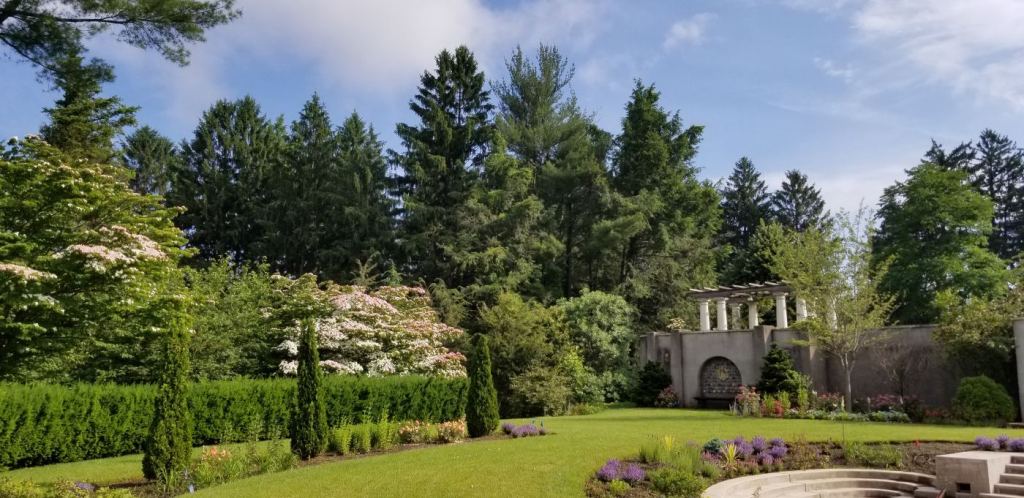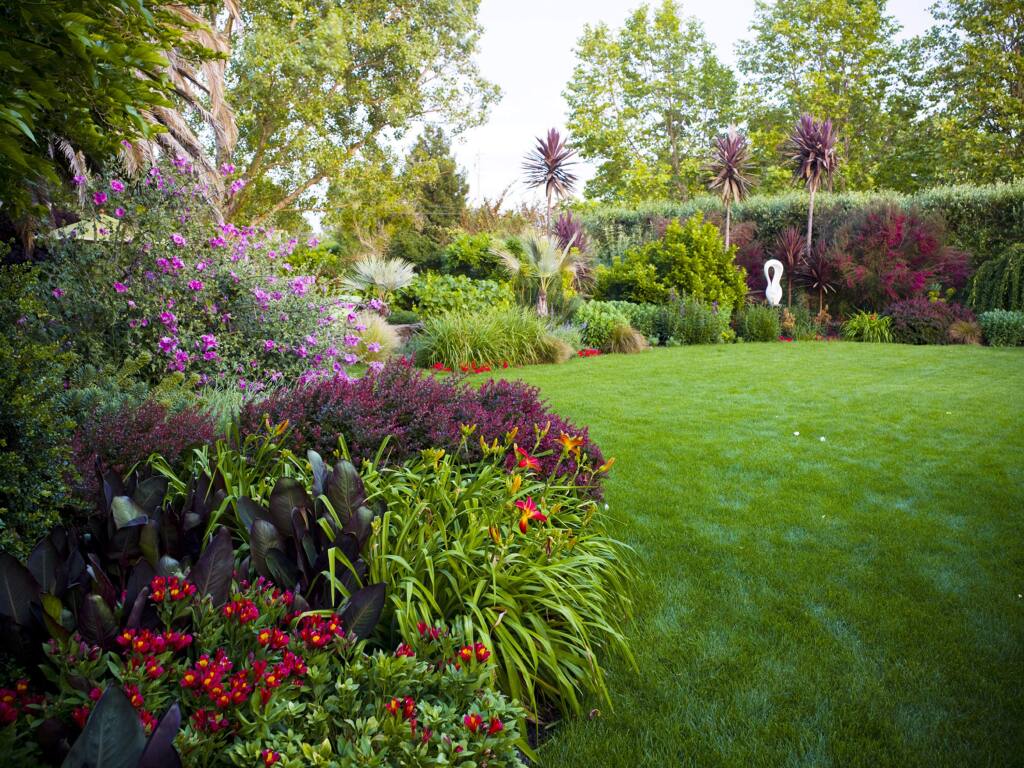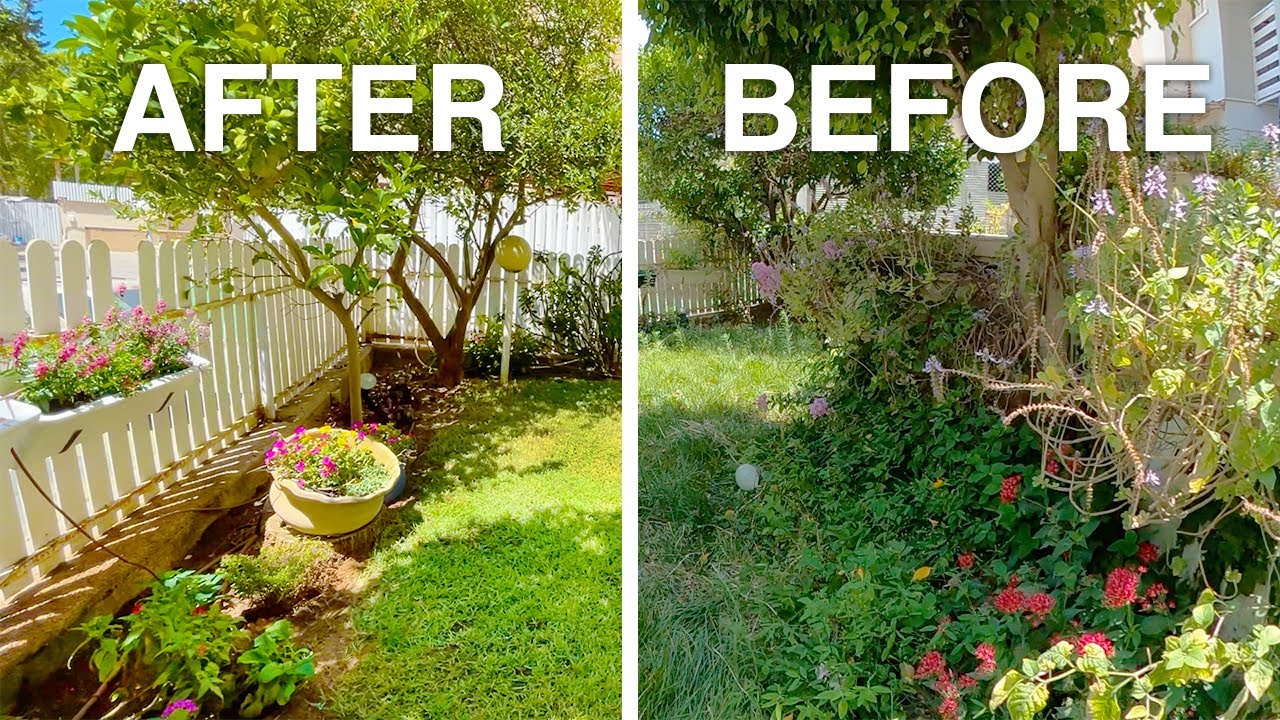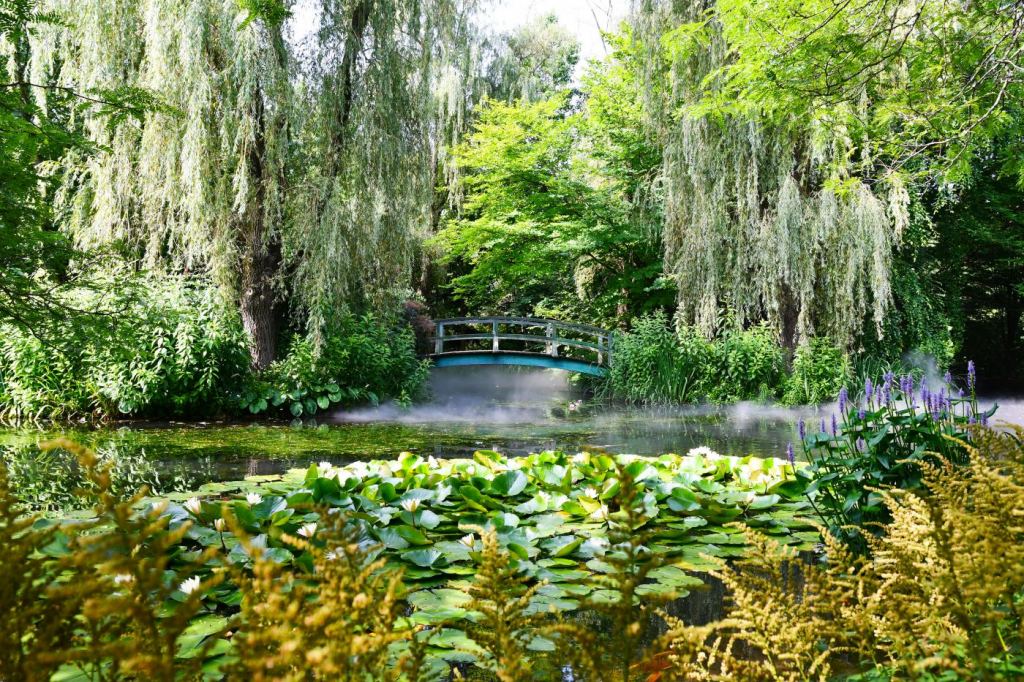Home
Party Bus New Jersey: Riding In Style And Celebrating The Night
A night of celebration and revelry can be taken to the next level with partybusnewjersey.net. As the ultimate way to travel in style, this innovative transportation service offers passengers a unique experience that cannot be found anywhere else.
From luxurious vehicles and custom decoration options, to an array of safety features, Party Bus New Jersey is sure to provide an unforgettable ride.
So spread your wings and take off on a journey for the ages – let Party Bus New Jersey take you on an adventure that will have you riding in grandeur and celebrating the night like never before!
Key Takeaways
- Party Bus New Jersey offers a unique and luxurious transportation experience for special events and celebrations.
- The buses are equipped with modern amenities, spacious interiors, and safety features.
- The professional drivers ensure a safe and fun journey for all passengers.
- Party Bus New Jersey offers tailored services for each group’s needs, including transportation, catering, and custom lighting effects.
Overview of Party Bus New Jersey
Party Bus New Jersey provides an exciting, luxurious way to travel and celebrate any special event or occasion. With its modern amenities and spacious interior, a party bus can make any event extra special. Whether it’s a birthday celebration, wedding reception, corporate event or night out on the town, a party bus rental can help create an unforgettable experience.
The professional drivers make sure that everyone gets safely to their destination while having plenty of fun along the way! The large interior allows for a festive atmosphere with enough room for all passengers to move around and enjoy themselves. Music systems and light shows are also available to add even more excitement to the ride.
The services offered by Party Bus New Jersey are tailored for each individual group’s needs. From simple transportation from one location to another, to full-service packages complete with catering options and custom lighting effects; whatever your vision is for your special night out they will work hard to make it come true.
All buses are inspected regularly so you know that you’ll be in safe hands while traveling in style – no need to worry about traffic or parking headaches! With this unique mode of transportation, your guests will have a memorable experience that they won’t soon forget.
Party Bus New Jersey offers clients an easy solution when planning their next big celebration. By providing exceptional customer service and reliable transportation solutions, they ensure that every passenger arrives at their destination feeling relaxed and ready for the festivities ahead! No matter what kind of occasion you’re celebrating or how many people will be attending; their experienced staff is dedicated to making sure everything runs smoothly from start to finish so everyone can focus on enjoying themselves without any worries.



Services Offered
Offering a range of services designed to make an event memorable, party buses in New Jersey provide customers with the opportunity to travel in comfort and luxury while making the most of their special occasion. From theme customization to drink options, there is something for everyone.
For those looking to throw a themed bash, many companies offer decorations and props that can be used to create the desired atmosphere. This could include wall coverings, banners, and even custom lighting. Furthermore, some companies also offer catering services if needed.
When it comes to beverages, many providers will have packages that include alcoholic drinks as well as non-alcoholic options like juices and sodas. Some may also provide bar staff or bartenders who can serve guests throughout the night if requested. There are also various snack selections available such as chips, pretzels, candy bars, and more so that guests can munch on throughout their journey.
Whether one is planning a birthday bash or corporate outing in New Jersey, there are plenty of party bus service providers who are equipped with all the amenities necessary for an unforgettable night out on the town. With these services at your disposal you can rest assured knowing that your event will be one to remember forever!
As you consider which company best suits your needs for your upcoming event or celebration it’s important to note what vehicles they have available so that you find one perfectly suited for your group size and budget requirements.
Choose Your Vehicle
For those looking to make a special occasion truly memorable, selecting the right party bus in New Jersey is essential. With so many options available, deciding on the right one for your celebration can seem daunting. Fortunately, there are various aspects of cost comparison and vehicle selection that can be taken into consideration when making this decision.
| Cost Comparison | Vehicle Selection |
|---|---|
| Price range | Capacity |
| Extras included | Entertainment |
| Distance | Luxury features |
| Special rates | Accessibility |
| Safety rating |
When choosing their ideal vehicle, individuals should consider factors such as price range, extras included, distance covered and any special rates that may apply. In addition to these considerations, it is also important to factor in how many people will be riding in the bus and what type of amenities they would like to enjoy during their ride. For example, some buses offer luxurious features such as flat-screen TVs and high-end audio systems while others provide more basic entertainment options like karaoke machines or gaming consoles. Additionally, potential riders must also evaluate each option’s safety rating and accessibility before making their final decision.
After careful evaluation of all these elements, customers are sure to find a party bus that suits both their needs and budget perfectly – allowing them to get ready for an unforgettable night of fun! With a wide variety of vehicles available for rent across New Jersey at competitive prices, it is easy to turn any event into an unforgettable experience while riding in style with friends and family. Now the task turns towards decorating the bus for maximum enjoyment!
Decorate the Bus
Making an event extra special requires the right decorations to be applied to the vehicle of choice. When it comes to party buses in New Jersey, there are many ways to personalize and decorate the interior of your transportation. From lighting options that can create a festive atmosphere, to seating arrangements that will make everyone comfortable enough for maximum enjoyment, making sure that your decorations fit your theme is essential for a successful ride.
One way to ensure that you have the right look is by using LED lights and fiber optics which can create a variety of different color combinations. You may also want to use fabrics or seat covers to give your bus a more luxurious feel or add centerpieces with balloons and streamers as well as other decorative items like signs and banners. Additionally, if you’re looking for something even more immersive, you could opt for special sound systems or TVs with karaoke capabilities.
No matter what kind of decorations you choose for your party bus in New Jersey, they should always be done with safety in mind. Make sure everything is securely fastened so no one trips over them while they move around inside the bus, and avoid using any flammable materials near any heat sources like windows or vents. With these considerations taken into account, you’ll be able to enjoy all the festivities without having any worries about safety issues arising from poor decoration choices.
As such, planning ahead when it comes time to decorate will help guarantee everyone’s enjoyment on their night out on the town! Moving forward in our discussion about ‘party bus new jersey’, let us now consider how important safety features are when selecting this mode of transport.
Safety Features
When selecting a mode of transport, safety features should be an important consideration. Riding in a party bus on the streets of New Jersey is no exception. The vehicles are carefully inspected by professional mechanics to ensure that passengers enjoy a safe and comfortable ride.
- Seatbelts for all passengers
- Emergency exits in case of emergency
- High-quality brakes to guarantee quick stops
- Expert drivers trained in defensive driving techniques
Riding in a party bus is like having your own personal chauffeur, allowing you to relax and enjoy the journey without worrying about traffic or other drivers. It’s also great that you don’t have to worry about parking or designated drivers because your professional driver will take care of those details for you! With these safety features, you can rest assured that your trip will be as safe and enjoyable as possible.
With all these benefits, it’s no wonder why people choose to ride in style with party buses! So if you’re looking for an exciting way to celebrate any special occasion with friends or family while staying safe, booking a party bus is the way to go! And now that you know what safety features are included, it’s time to book your party bus experience—it’s sure to be one you won’t soon forget!



Book Your Party Bus Now!
Booking a party bus is the perfect way to make any event an unforgettable experience without compromising on safety. Planning for a night out with friends can be both exciting and challenging, so it’s important to have all your ducks in a row before hitting the road. To help you out, here are some tips to keep in mind when booking your party bus:
| Tip | Answer | Benefits |
|---|---|---|
| Planning Tips | Consider the size of your group and plan accordingly. Ask about group discounts or special offers if applicable. Check for availability early as popular dates fill up quickly. | Get more bang for your buck, ensure everyone will fit comfortably, secure desired date/time slot. |
| Group Rates | Find out what deals and discounts are available when booking for large groups. If flexible in terms of date/time, inquire about off-peak pricing options too! Negotiate if possible – don’t be afraid to ask!. | Save money & time spent searching for other transportation alternatives that may not offer the same amenities or convenient access. |
At Party Bus New Jersey, we strive to provide high-quality customer service and memorable experiences by offering reliable transportation services at competitive rates! Our team will work with you every step of the way — from planning to execution — while ensuring your safety is our top priority. So why wait? Book your party bus today and get ready to ride in style and celebrate the night away!
Frequently Asked Questions
What are the age requirements for renting a party bus?
When renting a party bus, age requirements must be met to ensure the safety of all passengers. Costs involved may vary due to the age and size of the group. Furthermore, additional safety measures are often taken for younger passengers.
Is outside food and drink allowed on the bus?
Renting a party bus may come with certain restrictions, such as allowing only moderate amounts of food and drink. Party size limits could result in extra fees, so be sure to plan accordingly. Enjoy your journey while keeping within the guidelines for a luxurious yet safe ride.
Are there any special discounts for large groups?
Party bus companies may offer discount bundles and group pricing for large groups. It is worth inquiring about these special discounts as they are often available to help make the celebration more affordable.
Are pets allowed on the bus?
According to a recent survey, 40% of people are pet owners. Many party bus companies have pet friendly policies that allow pets on board if they follow the service policies. From size restrictions to specific breed requirements, customers should be aware of these regulations prior to booking.
Does the bus have a sound system?
The bus features a quality sound system, with speakers capable of handling any music selection. Enjoy the ride and let the vibrant tunes bring your celebration to life!
Conclusion
Riding in a Party Bus New Jersey is the ultimate way to celebrate a night out! From luxurious interiors to the peace of mind that comes with safety features, you can enjoy your evening without worry.
Choose from an array of vehicles and customize it to your own style. Whether you’re celebrating a birthday or just looking for a fun night out, riding in one of these buses will be an experience like no other!
So don’t wait another minute – book your party bus today and make sure your next event is one that won’t be forgotten!
From Seed To Harvest: The Journey Of A Local Garden Club Member
With the increasing demand for locally-grown produce, many aspiring gardeners are eager to join a local garden club. Yet, there is much more to gardening than simply planting seeds. From selecting the right type of seed to harvesting the produce, the journey of a local garden club member is both complex and rewarding.
This article provides an overview of this journey, including key steps such as preparing the soil, monitoring growth and harvesting the produce. Through understanding these steps, readers will gain insight into how their own gardening endeavors can benefit from participation in a local garden club.
Garden club notes
- Joining a local garden club offers a complex and rewarding gardening journey.
- Selecting the right seeds, considering factors like climate, temperature, sunlight, soil pH, fertility, texture, drainage, and nutrient availability, is crucial for successful gardening.
- Preparing the soil through adding soil amendments, testing soil pH, using fertilizers, and improving drainage and water retention with compost is essential.
- Monitoring growth, keeping accurate records, and harvesting produce properly are important steps to optimize yields and enjoy preserved harvests throughout the year.
Choosing the right seeds
Selecting the ideal variety of seeds is an essential step in ensuring a successful harvest. It is important for garden club members to research the best type of seed for their particular growing environment and soil quality. Factors such as climate, temperature, and amount of sunlight should all be taken into consideration when making this choice.
Additionally, one must consider soil pH levels, fertility, texture, drainage capacity, and nutrient availability before selecting a suitable seed. If the wrong variety is chosen it can lead to poor germination rates or even crop failure if conditions are not optimal.
When choosing a seed it is also important to check its origin and quality. Many commercial seeds have been bred for improved traits such as disease resistance or higher yields; however some of these varieties may not thrive in certain climates or soils. Gardeners should always read labels carefully and purchase from reputable sources that guarantee freshness and viability. Properly storing seeds will further ensure they retain their vitality until planting season arrives.
For gardeners that wish to save money by harvesting their own seeds from previous harvests, this practice can be rewarding but requires more careful planning since not all types will produce viable offspring or remain true-to-type if cross pollinated with other varieties nearby. With proper seed selection and storage techniques, local garden club members can set themselves up for success come harvest time. The next step then becomes preparing the soil for optimum growth potential.

Preparing the soil
Preparing the soil is an important step for successful gardening.
Adding soil amendments helps to improve the texture and nutrients of the soil, while testing the pH level can help to determine whether or not the garden site is suitable for certain plants.
Understanding these processes will help local garden club members ensure their gardens are ready for planting seeds.
Adding soil amendments
Incorporating soil amendments is essential for successful gardening. Different fertilizer types can be used to improve soil composition, such as organic or synthetic varieties.
Organic fertilizers are natural and usually derived from plants and animals. They break down slowly, releasing essential nutrients into the soil over time.
Synthetic fertilizers contain concentrated amounts of chemical-based nutrients that are released quickly when applied to the soil.
Both types of fertilizer should be incorporated before planting, either by tilling them directly in the garden bed or spreading them on top of the soil surface and then worked in with a rake or hoe.
Additionally, adding compost can help improve drainage and water retention in heavy soils while amending sandy soils with organic matter will increase water holding capabilities and nutrient availability.
Ultimately, using an appropriate combination of amendments will ensure optimal fertility for a bountiful harvest.
The next step is to test the pH level of the soil to measure acidity levels which can affect plant growth.
Testing the pH level
Testing the soil’s pH level is essential to determine its suitability for plant growth. The optimal range of soil pH varies between plants, so it is important to research the specific needs of each type of plant before testing the soil.
Garden club members can use a variety of methods to test soil acidity and alkalinity levels, such as litmus paper or commercially available pH test kits. Additionally, gardeners should consider incorporating certain strategies into their gardening practice which will help maintain an optimal pH balance over time, such as adding lime or sulfur-based fertilizer, using compost or manure, or growing cover crops.
Testing the pH level provides valuable insight into how suitable the soil is for planting; understanding this information allows gardeners to best prepare their land for successful planting and harvesting. With an informed approach and appropriate means of testing and adjusting accordingly, gardeners can ensure that their soil has ideal conditions for optimum growth throughout the entire cycle—from seed to harvest.
Planting the seeds
Planting seeds requires an understanding of planting times and depths, as well as the creation of a planting schedule.
This is important because it helps to ensure that the desired plants are able to achieve optimal growth conditions.
Furthermore, knowing when and how to plant can help gardeners maximize their harvest yields.
Understanding planting times and depths
Accurately determining planting times and depths is a critical component of successful gardening. Seed selection, soil nutrients, and understanding the local environment all play an important role in this process.
- Seed Selection: Knowing which plants will thrive in one’s local climate is key to successful planting. Researching seed varieties that are suited for the specific environment can help ensure optimal growth and harvest.
- Soil Nutrients: Understanding the type of soil available and what nutrients will be needed to nourish the plants is also essential. Adding mulch or compost can help enrich the soil and promote healthy plant growth during each season.
- Local Environment: Being aware of any potential environmental threats such as extreme temperatures or pests can also aid in successful gardening practices. Taking preventative measures against possible issues before they occur helps protect both crops and gardeners alike.
By taking into account these factors, gardeners can confidently plan their planting schedule with greater efficiency and accuracy, ensuring a bountiful harvest come harvest time.
Creating a planting schedule
Creating an effective planting schedule is a crucial step for successful gardening. To do this, a gardener must consider factors such as the type of plants being planted, the time of year they should be sowed, and the necessary soil depth. | Plant | Time to Sow | Soil Depth ————-|——–|————-|———– Tomatoes | Spring | 1-2 inches | Carrots | Spring/Fall | 1 inch Beans | Summer/Fall| 2 inches Lettuce| Winter/Spring| 0.5 inch Composting and introducing beneficial insects into the garden can also contribute to stronger plant growth when creating a planting schedule. With careful consideration of these factors, gardeners can create a plan that will lead to optimal growth throughout their gardening journey from seed to harvest.
Watering and weeding
Adequate watering and proper weeding are essential components for successful gardening. In order to keep plants healthy, gardeners must pay close attention to how much they water their plants. This includes considering factors such as soil type, temperature, humidity, amount of sunlight, and wind exposure.
Additionally, weeds can quickly overtake a garden if not properly controlled. To do so effectively requires both manual removal or using mulching techniques that block sunlight from reaching the weed’s roots and prevent them from growing in the first place.
Gardeners may also have to deal with pests that can damage their crops by consuming foliage or transmitting plant diseases. To ensure a successful harvest, gardeners should regularly inspect their gardens for signs of disease or pest infestation and take swift action against any potential threats.
In addition to these steps, it is important that gardeners remain vigilant about weeding on an ongoing basis as even small weeds can grow quickly under the right conditions. Finally, having an understanding of when and how much water plants need helps promote healthy growth which leads to better yields at harvest time.
With careful attention and diligent effort throughout the growing season, local garden club members can successfully manage their plots from seed to harvest.
Monitoring the growth
Monitoring the growth of crops throughout the season is essential for optimizing yields. Gardeners must track progress by closely following their plants from germination to harvest. This includes assessing the health of plants, monitoring pests, and watching for signs of disease. To keep a record of this information, gardeners often create tables with columns for date, growth stage, pest activity, and notes on plant health.
| Date | Growth Stage | Pest Activity | Notes on Plant Health |
|---|---|---|---|
| 5/2 | Germinating | None | Wilting |
| 5/8 | 2 leaves | Aphids | Brown spots |
| 5/14 | 4 leaves | Ants | Yellowing |
| 5/20 | Flowering | None Healthy |
Through consistent monitoring gardeners can gain insight into how their plants are progressing and make changes to optimize yield or address potential issues before they arise. Keeping accurate records also helps gardeners learn from their successes and failures so that next year’s crop will be even better than this year’s! By understanding how to monitor plant growth effectively, local garden club members can become more successful in their endeavors. Harvesting the produce is the final step in the cycle as a gardener reaps what they have sown during the growing season.

Harvesting the produce
Reaping the benefits of a season’s hard work, harvesting the produce marks the end of a compelling saga for any gardener.
Harvesting techniques vary from one garden to another, depending on what type of plants are being grown, and how large or mature they have become. For example, larger vegetables like squash and pumpkins can be cut off with pruning shears or even picked up by hand. Smaller vegetables such as tomatoes and peppers should be handled more delicately; it is often best to pinch them off with two fingers instead of using tools that may damage the plant or fruit.
In addition to knowing how to properly harvest their produce, gardeners must also know how best to store it. Fruits and vegetables can spoil quickly when not stored correctly; therefore, it is important to choose storage containers that will help protect them from air exposure and dehydration. Depending on what is being stored, many gardeners opt for plastic bags or cardboard boxes lined with newspaper as well as shelves placed in cool areas such as cellars or basements.
The journey of a local gardener does not end when the produce has been harvested—it continues until all the fruits and vegetables have been enjoyed!
As part of this process, some gardeners choose to preserve their harvests by pickling cucumbers, drying herbs, freezing berries or making jams out of fruits like strawberries and peaches. This way they can savor the delicious bounty from their gardens throughout winter months ahead!
Frequently Asked Questions
What tools and materials are needed for gardening?
Gardening requires various tools and materials, such as trowels, shears, wheelbarrows, and watering cans. Other essentials include composting basics like organic matter and soil preparation like fertilizer. Mulch is also important for maintaining moisture and controlling weed growth.
What is the best way to store harvested produce?
Preserving techniques such as canning, freezing, and drying can help to maintain the quality of harvested produce. Additionally, proper storage options including cool, dry locations or well-ventilated containers can help prolong its shelf life.
How can a novice gardener get started?
The novice gardener can begin their journey by researching planting techniques and soil preparation. Through careful attention to detail and best practices, they can set themselves up for a rewarding harvest. Irony aside, there is much to learn – but with dedication and enthusiasm, great success awaits!
What are the most common pests and diseases that affect gardens?
Gardens can be affected by a range of pests and diseases. Poor planting techniques or soil preparation may lead to increased susceptibility. Commonly seen issues include fungal infections, infestations of insects such as aphids, slugs, and caterpillars, as well as viruses and bacteria.
Are there any tips for conserving water while gardening?
Irony aside, conserving water is a key factor in successful gardening. Water harvesting and drip irrigation are two of the most effective techniques for reducing water waste. Additionally, mulching with organic materials can help retain soil moisture and further reduce the amount of water needed.
Conclusion
The garden club member’s hard work has paid off – they now have a bountiful harvest!
From selecting the right seeds, to preparing and maintaining the soil, to nurturing the plants throughout their growth, it has been an arduous journey.
But with dedication and perseverance, success was achieved in the end – like a phoenix rising from the ashes.
As this experience demonstrates, with patience and care anything is possible.
Transforming Your Backyard Into A Paradise: A Step-By-Step Garden Makeover Guide In New Jersey
Are you looking to transform your backyard into a paradise? With the right plan in place, it is possible to create an outdoor haven perfect for entertaining and relaxation.
From assessing your space to selecting plants and designing a layout, this step-by-step garden makeover guide specifically tailored for New Jersey will help you bring the vision of your dream garden to life.
Imagine yourself surrounded by lush green foliage, vibrant flowers, and illustrations of natural beauty evoking a sense of peace. Create a magical experience by installing lighting that illuminates the space as night falls.
Finally, maintain your garden with proper care so that it can remain an oasis for years to come.
Key Takeaways
- Assess the space, soil health, sun exposure, and maintenance requirements before starting a backyard garden makeover in New Jersey.
- Choose a garden style based on the climate, sunlight, and soil quality of the area. Popular options include formal, Japanese, wildflower meadows, and cottage gardens.
- Consider incorporating both native and exotic plant species for beauty, diversity, and sustainability. Native plants are well adapted to the local soil and climate, while exotic plants may require more maintenance but bring unique beauty.
- Proper care and maintenance are essential for a beautiful garden. Regular watering, pruning, and weeding are important tasks that vary depending on the plant type. Organic fertilizers can improve soil quality and provide nutrients for optimal plant growth.
Assess Your Space
An effective garden makeover begins with an assessment of the space available. This includes assessing the soil health, sun exposure, and other factors that will determine what kind of plants and design elements will work best in your backyard. It is important to take into consideration not only what you want your garden to look like but also how much maintenance it requires.
Additionally, consider any existing structures or trees that could affect light levels or present challenges when planning a design. For example, if you have a large tree in the middle of your yard, this may limit where certain plants can be placed.
Furthermore, it is important to think about drainage patterns as poorly draining soil can lead to standing water which can damage plants and create breeding grounds for pests and disease-carrying insects.
Once you have assessed your space, you are ready to choose a garden style that suits your needs and preferences.
Choose Your Garden Style
Investigating the truth of various garden styles can help create a paradise in one’s outdoor living space.
Garden styles convey an overall look and feel that is based on planting techniques, colors, and shapes.
The most popular garden styles include:
- Formal gardens – These are highly structured gardens with geometric shapes such as circles or squares, symmetrical layouts, and perfectly manicured plants.
- Japanese gardens – These gardens feature winding pathways, ponds or streams with bridges over them, stones for meditation spots, and carefully pruned shrubs and trees.
- Wildflower meadows – This is a naturalistic garden style featuring native wildflowers which require little maintenance while providing abundant nectar to pollinators like bees.
- Cottage gardens – These are informal designs typically featuring an array of flowers along with vegetation that provide shade requirements or improves soil quality such as herbs and vegetables in raised beds.
When selecting a style for your backyard it is important to consider the climate zone you live in as well as how much time you have available to maintain your garden design.
You should also take into account the amount of sunlight the area receives each day since some plants prefer more shade than others.
Additionally, understand your soil quality so you will know which types of plants will thrive in your yard before making any decisions about what type of garden style to choose for transforming your outdoor living space into a paradise.
From there, it’s time to select the right plants that fit within your chosen theme!
Select Your Plants
When selecting plants for a garden in New Jersey, it is important to consider the native and exotic species available.
Plant size and growth rate are also key elements that should be taken into account when planning a successful garden.
A variety of native flowers, shrubs, and trees can provide an attractive palette of colors while still being well-suited to the regional climate.
Exotic species may bring an added level of complexity or visual interest, but care must be taken to ensure they are appropriate for the local environment.

Native vs. Exotic Species
Comparing native and exotic species when transforming a backyard into a paradise is an important step in the garden makeover process. Native plants are well adapted to local soil and climate, while exotic plants can bring unique beauty and color to the garden. It is essential to consider both options when making decisions for your backyard:
- Native species provide better survival rates as they are already adapted to the local soil and environment.
- Exotic species often require more maintenance due to their need for special care or different pH levels of native soil.
- Exotic pests may be harder to control, so research is necessary before introducing them into the space.
- Native plants may lack variety compared to exotic species, but they usually have longer life spans and are pest-resistant due to their adaptation with local conditions.
Incorporating both native and exotic species can create a unique blend of beauty, diversity, and sustainability in your garden while also managing potential risks from pests or disease associated with introducing non-native varieties. Careful selection of plant size and growth rate will help ensure that your gardening efforts result in a stunning outdoor paradise that you’ll enjoy for years to come!
Plant Size and Growth Rate
Considering the varying growth rates and sizes of plants is essential when selecting which species to incorporate into a garden. Knowing whether a plant will stay relatively small or grow quickly and be large within a few years is important to plan for in order to achieve the desired aesthetic look.
The soil preparation should also take into account the rate of growth, as well as differences between native and exotic species. Additionally, mulching techniques may need to be adjusted if one or more species grow too quickly.
An effective garden design should take all these factors into consideration in order to create an aesthetically pleasing and environmentally friendly space. Furthermore, it is necessary to consider how each selection will interact with its surrounding plants and balance the overall composition of the garden.
With this knowledge, it becomes easier to choose which species are best suited for the particular landscape before moving on to designing your layout.
Design Your Layout
Designing a layout for your backyard garden is an essential step towards transforming it into a paradise. It involves carefully considering how you want to arrange the plants, as well as other elements such as pathways, furniture, and decorations. The first step is to assess the soil quality of your garden and make any necessary preparations for growing plants by adding nutrients, removing weeds, and controlling pests. After that, you need to decide on the size and shape of your garden. Consider whether you will be planting in beds or pots, what type of material will work best for walkways or seating areas.
| Element | Material |
|---|---|
| Pathway | Brick/Gravel |
| Seating Area | Wood/Stone |
| Plant Containers | Clay/Plastic Pots |
Once these decisions are made, you can begin sketching out your design using graph paper or a landscape planning app. Think about how each element should be placed relative to one another – where do you want the pathways to go? Where should seating areas be located? How much space should be allotted for each plant container? Make sure all elements are proportional so that it looks balanced when finished. To further enhance your design, consider installing lighting fixtures along pathways or around seating areas – this will create a beautiful ambiance in the evenings!
Install Lighting
Designing your backyard layout is an important first step in transforming it into a paradise, but the details are what will make it truly special. Installing lighting should be one of those details that you consider.
Outdoor lighting not only adds beauty to your garden, but also provides safety and security for your space. When choosing lights for your backyard, be sure to look for energy efficient options that will help reduce your energy consumption without sacrificing quality. Pathway and patio lights can add charm and ambience, while spotlights can make certain features stand out more. Consider LED or solar-powered lights as they are often the most energy efficient options available.
When installing outdoor lighting, keep safety in mind by avoiding exposed wiring or cords and use waterproof covers if needed. Also ensure that all wiring is adequately protected against water damage from rain or sprinklers by burying them deep underground or using waterproof seals around connections. Finally, do some research on any local laws regarding outdoor lighting before purchasing any fixtures so you don’t accidentally violate codes with the installation of your new garden lighting system.
With these considerations in mind, you’ll be able to install the perfect lighting system for your backyard paradise – one that brightens up the area while saving energy at the same time!
Maintaining a beautiful garden requires regular upkeep; next we’ll discuss how to properly care for your plants and lawn to keep them looking their best year round.
Maintain Your Garden
Gardening is a rewarding and enjoyable activity that requires effort to keep your garden looking its best.
Watering, pruning, and weeding are all important components of garden maintenance that need to be addressed in order to ensure your plants remain healthy and productive.
Each task requires specific knowledge and techniques depending on the type of plant you have in your garden; investing the time to learn these skills will help you maintain a thriving garden for years to come.
Watering
Watering is an essential part of garden upkeep, as it ensures plants receive the necessary hydration to remain healthy and vibrant. Gardeners in New Jersey have access to a variety of watering methods, from manual hand-watering with hoses or watering cans to automated irrigation systems. The table below outlines some advantages and disadvantages of each.
| Watering Method | Advantages | Disadvantages |
|---|---|---|
| Manual Hand-Watering | Cost Effective; Flexible Schedule | Time Consuming; Water Loss Through Evaporation |
| Automated Irrigation Systems | Easy Setup; No Human Error Involved | Expensive; Not Environmentally Friendly |
Manual hand-watering requires more labor but is cost effective and allows for flexibility with the schedule. Automated irrigation systems are convenient but require a higher initial investment and may not be environmentally friendly. After considering these factors, gardeners can decide which method best fits their needs. With proper maintenance, this will allow them to keep their gardens looking beautiful for years to come. Pruning and weeding are also important practices for maintaining a healthy garden environment.
Pruning and Weeding
Once the watering of plants in a garden is complete, the next step to transforming a backyard into a paradise is pruning and weeding.
Pruning is important for improving air circulation, preventing disease and damage caused by insects, as well as giving plants their desired shape. It also helps to remove dead or diseased parts of the plants.
Weeding involves removing unwanted weeds from the garden which can compete with other plants for nutrients, water, sunlight and space.
Organic fertilizers can be used to improve soil quality and provide additional nutrients for better growth of plants in a garden. Fertilizers should be applied at least twice every year – once in early spring and then again in late summer – to ensure that all nutrients needed are available throughout the growing season.

Frequently Asked Questions
What is the best time of year to start a garden makeover?
Beginning with a flourish, the best time to plan ahead and start a garden makeover is in the spring when climate control is optimal. This allows for plants to thrive and growth to be maximized while ensuring flora receive adequate sunlight.
What are the average costs associated with a garden makeover?
Budgeting for a garden makeover requires consideration of soil amendments, plants, and tools. Average costs depend on the size and scope of the project, as well as quality of materials used. Tips include researching options for cost-effective soil products and purchasing perennials over annuals.
How much time is required to complete a garden makeover?
The amount of time required to complete a garden makeover depends on factors such as plant selection and soil preparation. Generally, it takes several days or weeks to finish the project, depending on the complexity of the design.
Are there any specific regulations or requirements in New Jersey for garden design?
In New Jersey, landscaping permits may be required depending on the scope of the project, and native plants are highly encouraged to ensure a thriving garden environment.
Are there any special tools or equipment needed to complete a garden makeover?
Anachronistically speaking, garden makeovers require the use of special tools and equipment like watering systems and pest control. Knowing which ones to use is essential for a successful result; be sure to select options that are suitable for your particular climate.
Conclusion
As this garden makeover guide in New Jersey has demonstrated, transforming an ordinary backyard into a paradise is within reach. With careful planning and attention to detail, the right combination of styles, plants, and lighting can create a stunning outdoor space.
Through thoughtful selection of colors and textures, one can achieve a perfect balance between natural beauty and man-made elegance. From choosing the ideal style for your garden to maintaining it with regular care, this step-by-step guide will help you turn your dreams into reality.
Let your imagination run wild as you shape your backyard into an oasis of relaxation and enjoyment!
Unveiling Hidden Gems: Exploring The Secret Gardens Of New Jersey
Tucked away in the lush forests and meadows of New Jersey lies a hidden world, rich in culture and history. It is a place that few people know about, yet it has much to offer.
Like an undiscovered treasure, this secret garden awaits those who are willing to explore its splendor. From botanical gardens to historic sites, parks and nature areas to beaches and museums, these hidden gems have something for everyone.
Whether one is looking for a quiet respite or an exciting cultural experience, these attractions promise to provide visitors with memories that will last a lifetime.
Come discover the secret gardens of New Jersey – you won’t regret it!
Key Takeaways
- New Jersey has secret gardens that offer botanical exploration and educational programs.
- The secret gardens are part of the rich culture and history of the state.
- Visitors can learn about diverse cultures through the extensive collections and special exhibitions at museums like Newark Museum.
- The secret gardens provide a unique opportunity for outdoor recreation and wildlife observation.
Botanical Gardens
Botanical Gardens in New Jersey offer a unique opportunity to explore the diverse array of plants and flowers native to the region. From the sprawling grounds of Rutgers Gardens in New Brunswick to historic grounds like The Frelinghuysen Arboretum in Morristown, these gardens provide an amazing experience for visitors. Each garden offers something special, from bird watching and bug collecting opportunities to tranquil trails suitable for walking or biking. Nature enthusiasts will be delighted at the variety of plants they can find, including trees, shrubs, perennials, annuals, ornamental grasses and more. Garden lovers will appreciate the variety of design elements that are used throughout these gardens such as winding paths, ponds and waterfalls. Additionally, many botanical gardens also feature educational programs that teach visitors about gardening techniques or plant identification skills.
For those who want an even deeper exploration into nature’s beauty, there are several hidden gems scattered around New Jersey offering an even more serene experience. These secret gardens offer a peaceful escape from the hustle and bustle of everyday life with plenty of lush foliage and wildlife sightings awaiting those who seek them out. Whether it’s simply enjoying a leisurely stroll through one of these lesser known spots or taking advantage of any educational programs they may have available, these hidden gems provide delightful experiences for all types of visitors alike.
Transitioning now into exploring some historic sites throughout New Jersey; these locations provide interesting insight into the state’s past along with beautiful scenery to enjoy while visiting them.
Historic Sites
Historic sites of New Jersey are a testament to the state’s long and storied past. From colonial-era homes to Revolutionary War battlefields, these sites offer a chance for visitors to experience local lore and explore architectural gems from bygone eras.
Notable historic sites include:
- The Liberty Hall Museum in Union, which is home to the Kean family’s estate and offers insight into colonial-era life.
- The Princeton Battlefield State Park, where Washington’s troops famously defeated the British in 1777.
- The Fort Hancock Historic District at Sandy Hook, which served as an active military installation since 1895 before being decommissioned in 1974.
- The Red Mill in Clinton, built circa 1810 and now part of the Hunterdon County Historical Society complex.
These remarkable sites allow visitors to gain a better understanding of New Jersey’s history while taking in its unique architecture and landscapes. From here, it is possible to take an enlightening journey through time that reveals valuable insights about the state’s past and its people—insights that can serve as a bridge to its future.
Parks and Nature Areas
New Jersey is home to numerous parks and nature areas that provide outdoor recreation opportunities for visitors.
From the Great Swamp National Wildlife Refuge to the Watchung Reservation, there are plenty of places to explore and enjoy the outdoors in New Jersey. Hiking trails can be found throughout, offering spectacular views as well as opportunities to observe wildlife.
There are also a number of wildlife sanctuaries in the state, providing refuge for endangered species. The Stony Brook-Millstone Watershed Reserve is one such sanctuary, boasting over 5,000 acres of preserved land with nearly 30 miles of hiking trails. Other nature preserves like the Edwin B Forsythe National Wildlife Refuge provide opportunities for bird watching and feature an array of native plants and animals.
In addition, many local parks have trails that offer peaceful walks through wooded forests with tranquil streams running nearby.
Whether it’s a hike in a national park or a stroll through your local park – no matter what kind of adventure you seek – New Jersey has something for everyone looking to explore its secret gardens.
With so much natural beauty to discover, these outdoor spaces make an ideal destination for anyone seeking an escape from their everyday lives into nature’s embrace.
From majestic peaks to peaceful riversides, beaches offer yet another breathtaking view of New Jersey’s diverse landscapes…
Beaches
The pristine coasts of New Jersey offer visitors stunning vistas and a variety of beaches to explore.
For those looking for the perfect surf spot, there are plenty of options with waves ranging from gentle rollers to more challenging swells that will surely satisfy any thrill-seeker.
Beach camping is also popular, allowing visitors to spend extended periods of time in nature and enjoy all the beauty that New Jersey’s coastline has to offer.
Beach hopping is a great way to see as much as possible, while beach fishing can provide hours of fun for those who want an even more intimate experience with nature.
Additionally, many beaches have amenities such as picnic areas, restrooms, and lifeguards on duty during peak season for added convenience and safety.
With so many options available, it’s easy to find the perfect beach experience in New Jersey. From a quiet stroll along the shoreline to an adrenaline-pumping surf session at sunrise, these hidden gems offer something special for everyone.
Moving forward from this exploration of beaches in New Jersey, let us take a look at some other attractions that bring people to the Garden State: museums.
Museums
Newark Museum and Morris Museum are two of the most renowned museums in New Jersey.
Newark Museum is one of the largest fine art, natural science, and humanities museums in the state, with a vast collection that spans continents and centuries.
On the other hand, Morris Museum offers visitors an array of interactive exhibits that focus on science and history.
Both institutions provide invaluable cultural learning opportunities to all who visit.
Newark Museum
Founded in 1909, the Newark Museum is a beacon of culture and artistry in the city of Newark. It is home to an extensive collection of urban culture artifacts, including over 80,000 items related to American history, decorative arts, natural science and more.
It also features a unique array of galleries dedicated to historical legacies from around the world. In addition to its permanent collections, the museum also hosts special exhibitions and programs on topics ranging from contemporary art to African diaspora cultures.
The museum is committed to educating visitors about diverse cultures and inspiring them with works by notable artists from across the globe. With its rich cultural offerings, the Newark Museum serves as an integral part of New Jersey’s vibrant artistic heritage, providing an invaluable window into our collective past and present.
Through its efforts of uncovering hidden gems within the city’s landscape, it helps create meaningful connections between its visitors and local communities.
Morris Museum
The Morris Museum in Morristown, New Jersey is an ideal destination for art appreciation and exploration. Boasting a wide array of collections and exhibitions, the museum allows visitors to explore its offerings and discover new works of art.
It provides visitors with the opportunity to learn more about native plants from the region, as well as gain insight into international cultures. The Morris Museum offers something for everyone:
- Interactive exhibits that allow visitors to explore a variety of topics
- An expansive permanent collection featuring paintings, sculptures, and other works of art from around the world
- Educational programming on topics such as culture, science, and nature
- Events focused on engaging audiences in meaningful conversations about art appreciation.
The Morris Museum offers a unique experience for those looking to appreciate native plants or learn more about global cultures. From interactive exhibits to educational programs and events, it’s an excellent place for discovering hidden gems within New Jersey’s cultural attractions.
Cultural Attractions
Situated in New Jersey, numerous cultural attractions serve to provide insight into the state’s rich history and diverse culture; these hidden gems are a veritable treasure trove of knowledge waiting to be explored. From museums to art galleries, each offering an array of unique experiences that bring locals and visitors alike closer to the region’s past.
| Cultural Attraction | Dining Experiences |
|---|---|
| Morris Museum | Local Cuisine |
| Liberty Science Center | Food Trucks |
| Grounds for Sculpture | Farmers Markets |
| Newark Museum | Craft Breweries |
Morris Museum is one of the most popular destinations in New Jersey. It features an extensive collection of artwork from around the world as well as interactive exhibits and educational programs. Visitors can also enjoy a variety of dining experiences such as local cuisine or food trucks located near the museum. Additionally, Liberty Science Center offers engaging activities for all ages including demonstrations and hands-on science experiments. The nearby Grounds for Sculpture showcases sculptures by renowned artists throughout its sprawling gardens while Newark Museum contains multiple galleries showcasing both contemporary and traditional art pieces from around the world. Furthermore, locals can find additional culinary delights at nearby farmers markets, craft breweries or other unique dining experiences in the area. With so much to explore, New Jersey remains vibrant with its wealth of cultural attractions available year round.

Frequently Asked Questions
Are all of the locations open year-round?
Access to locations may vary, depending on seasonal changes. Some remain open year-round, while others are restricted at certain times of the year due to weather or other external factors. It is important to consider location access when planning a visit.
Are pets allowed in any of the locations?
Many of the secret gardens in New Jersey have pet friendly policies, though some may require pets to remain on a leash. It is important to check with each garden for specific rules and regulations regarding pet access.
Are there any discounts or special offers for visiting multiple locations?
Visitors who explore multiple locations can benefit from an accessibility discount – up to 20% off parking availability. This offer provides a great incentive for visitors to take advantage of the many secret gardens New Jersey has to offer.
Are there any guided tours available?
Various tour routes and guided tours are available in New Jersey. Tour guides provide information about the locations, helping to uncover hidden gems. They also offer insight on flora and fauna, local history, and other features of the area.
Is there a complete list of all the locations featured in the article?
Unearthing a trove of secrets, there is an expansive list detailing the cultural significance and historical context of each location featured in this article. Each entry providing a glimpse into the hidden gems waiting to be discovered. An absolute must for anyone looking for a journey through time!
Conclusion
New Jersey is a state of hidden gems, offering visitors the opportunity to explore botanical gardens, historic sites, parks and nature areas, beaches, museums, and cultural attractions.
With so much variety to choose from, it is easy to find something for everyone in New Jersey. From the Liberty Science Center in Jersey City to the beautiful sandy beaches of Cape May County, there are plenty of places that will amaze visitors.
Additionally, with over 500 miles of coastline along the Atlantic Ocean and Delaware Bay combined, there are countless unique attractions waiting to be discovered.
With some interesting facts – for example: New Jersey has the most diners per capita than any other state – it’s no surprise why many people visit New Jersey each year!
The Ultimate Guide To Creating A Stunning Local Garden: Tips From Our Garden Club Experts
Creating a stunning local garden is no small task. It requires careful planning and an eye for detail in order to create a space that can be enjoyed for years to come. Our garden club experts are here to provide the ultimate guide for creating your dream outdoor oasis, from analyzing your site, choosing the right plants, utilizing plant pairs, designing your space and using organic materials to maintaining your garden.
Let us take you on a journey of discovery that will allow you to transform any area into a beautiful and flourishing environment. Together we can find inspiration in nature while creating something truly special.
Key Takeaways
- Analyzing the site is essential, considering terrain, climate, and sunlight exposure.
- Research native plant species that thrive in similar conditions.
- Design your space with contrasting colors, foliage texture, and organic materials.
- Proper watering techniques are essential for successful plant growth.
Analyze Your Site
In order to create a stunning local garden, it is essential to analyze the site carefully, taking into account the terrain and climate as if one were peeling back an onion layer-by-layer.
Assessing sunlight is of paramount importance. Knowing what season offers the most hours of sun exposure will inform which plants are suitable for your garden.
Additionally, soil testing should be conducted to determine soil acidity and nutrient levels. Understand that different types of plants have different preferences in terms of these values and choose accordingly.
It is also important to consider whether or not you need assistance from landscaping professionals when assessing topography or drainage issues.
Finally, research native plant species in your region that thrive in similar conditions so you can create a harmonious outdoor sanctuary while benefitting the environment around you.
With this information at hand, you can then move onto choosing the right plants for your dream garden.
Choose the Right Plants
Selecting the appropriate plants is an essential component for a successful outdoor space. Careful consideration must be taken when making decisions for the garden, as each species of plant has unique needs and requirements that can vary greatly from one another.
Local native species often have the greatest advantage in most landscapes since they are already adapted to the local climate and soil fertility. However, even among native plants there is variation in water and soil needs, sunlight exposure, and other factors that should be taken into account when selecting suitable specimens.
In addition to considering regional conditions, it is important to assess individual site characteristics such as available sunlight, drainage quality, or any existing features which could affect proper plant growth. It may also be necessary to amend soils with organic matter if needed in order to improve fertility or increase microbial activity.
With careful analysis of all these elements combined together, the right choice of plants can help create a beautiful outdoor space that will thrive year after year with minimal maintenance costs.
By selecting plants with complementary bloom times and foliage textures for visual variety within your landscape design plan you can create a well-rounded aesthetic effect that provides seasonal interest throughout the growing season. Furthermore, pairing certain species together can help enhance their individual performance while creating an overall more resilient garden system overall.
Utilize Plant Pairs
By pairing certain plant species together, gardeners can optimize growth and produce a more resilient system overall. This practice is known as companion planting, and it helps to cultivate soil in ways that are beneficial for both plants involved. Gardeners should consider the size of each plant, as well as their individual water needs before deciding on which pairs work best together. Additionally, they may want to take into account whether one plant provides shade or nutrients for the other if they wish to get optimal results out of their pairings.
In addition to pairing plants based on their size and water/sunlight requirements, gardeners should also consider what types of pest management benefits they will receive from their chosen combination. Some plants act as natural repellents against pests while others attract helpful insects such as bees or ladybugs in order to keep balance in the local ecosystem. By properly researching which plants work best with one another in terms of pest control, gardeners can create a thriving environment that requires minimal maintenance from them.
The most successful gardens incorporate both aesthetics and functionality into their design plans – this includes utilizing effective plant pairings for optimal growth and pest management. With proper research, planning, and knowledge about each species’ individual needs, gardeners can create stunning gardens with resilient systems that will continue to thrive regardless of environmental changes or disruptions.
These carefully crafted gardens are sure to bring beauty and joy to any outdoor space – now it’s time to design your space accordingly!
Design Your Space
Creating a visually stunning and efficient outdoor space requires careful consideration of the plants chosen for companion planting. Designing your space should include layering colors, foliage texture, and organic materials to create an aesthetically pleasing garden.
Here are four tips from our Garden Club experts:
- Utilize contrasting colors that draw attention to specific areas of the garden
- Incorporate variety in foliage texture to provide visual interest throughout the year
- Plant shrubs as a backdrop for colorful perennials and annuals
- Use organic materials like mulch or compost to retain moisture and improve soil quality
By considering these design elements when creating your own unique local garden, you can ensure a balanced composition of plants offering both beauty and practicality.
Moreover, integrating seasonal changes into your design will allow for flexibility in adding new plants or rearranging existing ones over time as desired. With thoughtful planning and execution, you can create an inviting outdoor space that reflects your personal style while being beneficial to local wildlife too.
Use Organic Materials
Organic materials, such as mulch and compost, can contribute to an inviting outdoor space by maintaining moisture in the soil and adding texture to the garden.
Composting basics involve gathering organic waste from kitchen scraps, yard debris, and other sources. This material is then broken down into a nutrient-rich fertilizer for plants.
Sustainable sources of mulch include leaves, grass clippings, straw or hay, wood chips, sawdust or bark. Mulch helps retain soil moisture and reduce weed growth while adding organic matter to the soil which can help with drainage issues.
Organic options also improve overall soil health by providing essential nutrients for root development and encouraging beneficial insects like earthworms that aerate the soil naturally. Additionally, using natural materials minimizes environmental impact since they are biodegradable and free from harmful chemicals unlike synthetic alternatives.
Not only do organic materials offer various benefits but they also enhance the aesthetic appeal of any garden space with their vibrant colors and textures. They provide a unique look that can be tailored to fit any landscape design while giving your garden a more natural feel than conventional options.
Using organic materials in your local garden is an excellent way to create a stunning outdoor space that is both functional and aesthetically pleasing while utilizing sustainable sources that benefit both you and the environment. With proper selection of composting basics and mulching techniques for your specific needs it’s easy to achieve this goal without compromising on quality or style. Moving forward with regular maintenance will ensure your garden stays looking beautiful all year round.

Maintain Your Garden
Maintaining a garden can be a rewarding experience, but also requires the application of proper techniques.
Watering your plants correctly is essential for successful growth; in addition, pruning and trimming are important for shaping your plants and keeping them from becoming overgrown.
Lastly, effective weed and pest control is necessary to ensure your garden remains healthy and vibrant.
Watering Techniques
Adopting a careful watering technique is essential for ensuring the optimal growth of plants in a local garden. Proper planning of irrigation, as well as soil aeration, can help ensure that enough water reaches the roots while avoiding overwatering.
Watering should be done early in the morning or late evening to reduce water loss due to evaporation. Furthermore, it is important to use an appropriate amount of water and not overwater plants as this can lead to root rot and other problems.
It is also necessary to adjust watering patterns according to weather conditions, such as during periods of heavy rain or intense heat. By following these techniques, gardeners can optimize their local gardens for maximum health and success.
With these considerations in mind, pruning and trimming are important next steps in creating a stunning local garden.
Pruning and Trimming
Regular pruning and trimming of plants is essential for promoting healthy growth and development. According to recent studies, up to 30% of a plant’s growth is attributed to proper pruning techniques. Doing so helps to keep plants looking their best, as well as encourage the desired shape and size.
Before pruning or trimming, it is important to assess the overall condition of the plant, including its companion planting needs and soil preparation requirements. Tools should be sharpened or replaced regularly in order to ensure clean cuts that won’t damage the plant’s bark or foliage. Removing dead, diseased, or damaged branches can help reduce pest infestations while also aiding in better air circulation within the garden.
With consistent maintenance and attention, these practices will yield rewarding results when cultivating a stunning local garden. The next step in creating an ideal outdoor space involves weed and pest control measures.
Weed and Pest Control
Now that the pruning and trimming of your garden is complete, it’s time to focus on controlling weeds and pests.
One of the best methods for weed control is to use mulch which will help suppress weed growth.
For pest control, natural predators such as ladybugs are an effective way to keep insects from damaging plants.
Additionally, companion planting by mixing different plant varieties together can discourage harmful pests while encouraging beneficial ones.
By using these natural methods you can ensure that your garden remains healthy and free of pests and weeds.
Frequently Asked Questions
What are the most popular plants for local gardens?
Native species are popular for local gardens due to their hardiness and ability to thrive in the area’s climate. Container gardening with small, low-maintenance plants is also popular, as it can fit into any size space.
What is the best way to keep pests away from my garden?
Alluding to the natural balance of predator and prey, one beneficial way to keep pests away from a garden is by introducing natural predators such as birds or spiders. Additionally, companion planting can be effective in deterring certain pest species from gardens.
What should I consider when choosing plants for my garden?
When selecting plants for a garden, one must consider climate impact and the range of plant selection available to ensure successful growth. Factors such as soil type, water requirements, and sunlight should also be evaluated for optimal outcomes.
How often should I water and fertilize my garden?
Though the optimal watering frequency and fertilizer type depend on a variety of factors such as climate, soil type, and plants chosen, generally speaking most gardens should be watered deeply every one to two weeks and fertilized using slow-release organic fertilizers such as compost or manure.
What type of soil should I use for my garden?
When selecting soil for a garden, the type of plants being grown should be taken into consideration. Different plant varieties may require different types of soil, such as sandy or clay-based soils. Organic matter can also be added to enrich the existing soil and create better conditions for healthy growth.
Conclusion
Gardening is an endeavor that requires care and attention to detail. With the right planning, materials, and maintenance, a beautiful local garden can be created.
By taking into consideration what plants will thrive in your area and carefully designing the layout of your garden space, you can create a stunning masterpiece that will bring joy for years to come – like a painting on canvas.
With some patience and effort, the process of creating a local garden can be enjoyable and rewarding.





